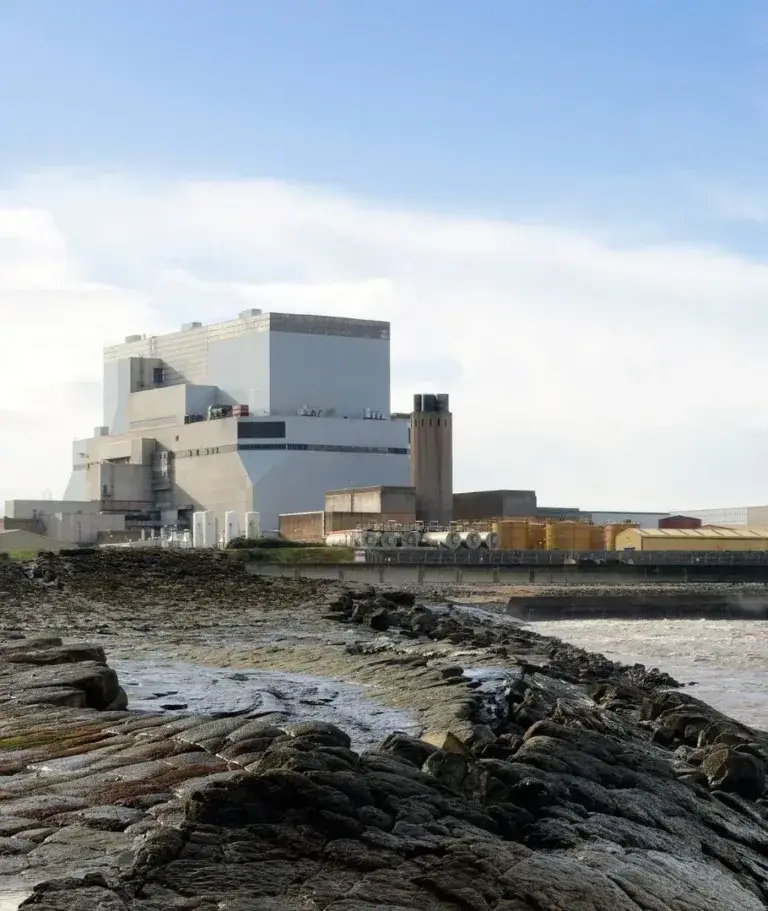Acoustic Fish Deterrent (AFD) technology is continuously developing.
Since Hinkley Point C received its Development Consent Order, AFD technology has significantly advanced, addressing previous concerns about maintenance schedules and meeting system specifications. Key developments include:
- Improved ROV Capability: Enhancing safety in AFD maintenance.
- Active Pressure Compensation System (APCS): Tackling tidal challenges.
- Underwater Power and Communication Hubs: Greater reliability with dual redundancy.
- Remote Operation and Monitoring: Daily system condition updates via text message and email.
- Maintenance Regime Improvements: Extended servicing intervals from 18 to 24 months, potentially beyond 36 months.
The Hinkley Point C Development Consent Order requires the integration of LVSE intake, AFDs, and FRR systems to protect up to 182 million fish annually. The AFD is crucial for safeguarding fragile fish species like sprat and shad, which would otherwise perish if they come into contact with the fish return system at the end of the power station’s cooling tunnels.
Environmental campaigners have criticised EDF for allegedly avoiding the implementation of these vital measures, potentially endangering millions of fish when the new nuclear processing plant becomes operational. Groups like the Wildfowl and Wetlands Trust and the Somerset Wildlife Trust have been advocating for the installation of the AFD, emphasising its importance in preserving aquatic life in the Severn Estuary.
The Government’s report and recommendations can be read here.
Jo Smoldon of the campaign group Stop Hinkley expressed frustration, stating, “EDF are refusing to comply with the environmental conditions they agreed to at the outset, to protect the marine life of the Severn Estuary and its nine great rivers. Why on earth are EDF still not wanting to save the fish? This latest excuse undermines the technology that was put in place to protect the fish. For the last seven years EDF has refused to engage with Fish Guidance Systems, who were asked by EDF to provide the technology which they are now discrediting!”
Our Latest Acoustic Fish Deterrent News

Nuclear power plant constructors undermine environmental protection measures
In an open NNB Generation Company (HPC) Limited letter that explores changes toMaisemore Weir as an alternative to the already approved Acoustic Fish Deterrent (AFD) at HinkleyPoint C, the company flagrantly disregards and negates the proven science and technology which wouldprevent catastrophic environmental implications such as the death of 182
Moved Saltmarsh Won’t Save 182 million Fish Per Year: The Best Solution Remains The Acoustic Fish Deterrent
After the public consultation back in January, EDF is now looking at alternative and less desirable saltmarsh locations after public rejection from residents, environmentalists, and a report from the Environment Agency. The answer to the problem continues to be the Acoustic Fish Deterrent. Video regarding Salt Marshes The saltmarsh, while

Overview of the Environment Agency’s Response to EDF’s Plans to Remove AFD from Hinkley Point C
In early June, The Environment Agency provided a response to the Hinkley Point C Development Consent Order Material Change consultation. The Environment Agency mission is to ensure that Hinkley Point C (HPC) operates to high environmental standards and states that it will continue to engage with EDF to achieve this.

The Benefits of Using Acoustic Fish Deterrents at Nuclear Power Plants: Insights from Doel Nuclear Power Station
Acoustic Fish Deterrent systems have been used at coastal power plants for nearly thirty years. Operated by Electrabel,the Doel Nuclear Power Station, situated on the River Scheldt near Antwerp, Belgium, comprises four pressurised water reactors (PWRs) with varying capacities. The Acoustic Fish Deterrent (AFD) system is installed exclusively on the